How to connect a dishwasher with your own hands
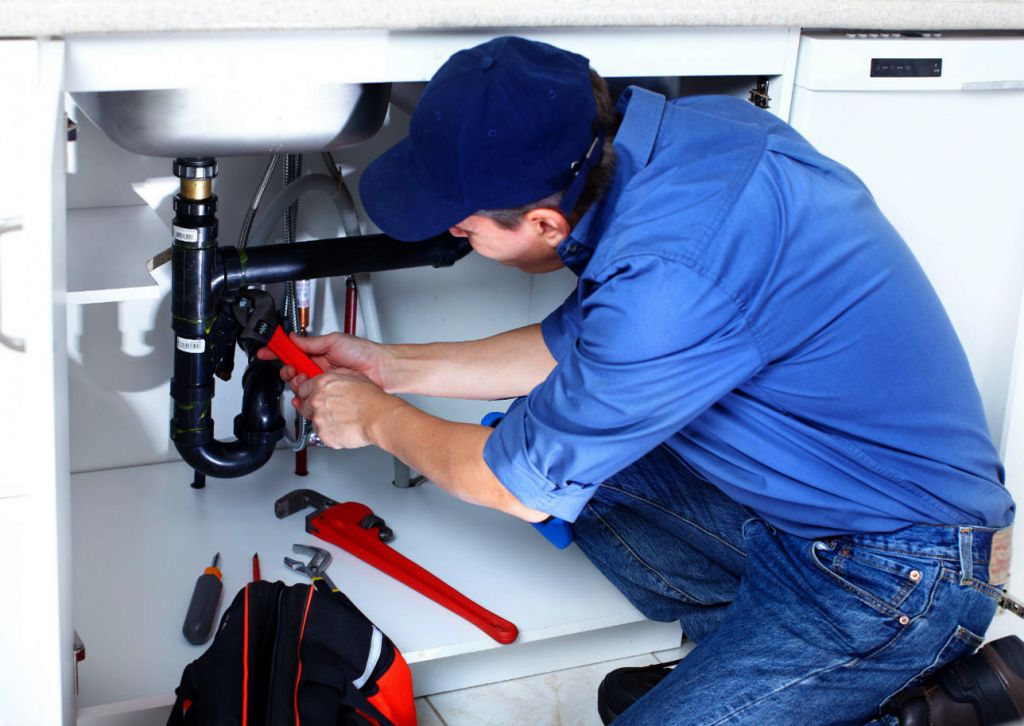
After buying a dishwasher until the delight of clean dishes, one step remains - this is connecting the dishwasher to the drain, water and electricity. Many, without hesitation, call the master, completely trusting him this work. Others, on the contrary, having decided to save money, begin to study this issue in order to connect the equipment with their own hands. And rightly so, having studied the nuances, you can definitely understand how complicated or simple everything is. If you have the time and desire, then this article is for you, we will tell you in detail how to connect the dishwasher yourself.
Work order
To begin with, we’ll decide where to start connecting the dishwasher, what is the best way to connect the drain or water first? Why such a question arises, because in some instructions it is first proposed to install built-in appliances, then connect it to the drain. But imagine how you need to contrive to crawl up to the back of the dishwasher when it is already installed. Therefore, the only true sequence can be:
- connecting the machine to the drain;
- water connection;
- connection to an electric network;
- trial testing;
- installation in a niche or in a designated place.
All these stages are preceded by small preparatory work on unpacking the machine, preparing the necessary tools and accessories.
Important! After the machine is delivered to the room where it will be installed, you need to wait for it to stand for a while, you do not need to immediately turn it on to the network.
Necessary tool and possible difficulties
In order to properly connect the dishwasher, in addition to a screwdriver and pliers, you may need a drill, level, and also:
- clamps;
- siphon with an additional branch;
- tee crane brass or bronze, but not silumin;
- wrench;
- nippers;
- ground outlet.
In addition, it is worthwhile to warn you that when installing dishwashers of different brands, nuances and some difficulties may appear. So, for example, a short inlet or drain hose, a short electrical cord. In this case, you have to buy accessories separately. Often, the gaskets included in the kit are also not suitable, so many experts use a fumka to isolate threaded joints. Here are some more features for connecting dishwashers:
- At Bosch, it is necessary to correctly position the gasket correctly according to the instructions. If it is turned over on the wrong side, then after 2-3 washing cycles there will be a leak. Bosch has a very sensitive valve, standing on the water supply, so when installing, you need to immediately take care of connecting the flow filter.
- As for the well-known dishwashers from Siemens, they are one of the most unpretentious when connected, but demanding on the size of the niche and fixtures.
- Electrolux dishwashers are tilt sensitive. The slope should not be more than 2 degrees, so when leveling the machine on the floor, a level may be required.
Drain and water connection
to connect to the sewer, you will have to change the usual siphon to the one that has a nozzle, if you connect a washing machine with a dishwasher, there should be two nozzles. When installing a compact dishwasher under the sink, a special siphon is required, we wrote about this in an article Compact sink dishwashers.
After the siphon is reinstalled, you can connect the drain hose of the machine. To do this, the end of the drainage hose of the dishwasher is put on the siphon "nose" and tightened with a hose clamp. Such a connection will be reliable.
When connecting the dishwasher to the drain, you must not forget:
- at the junction of the hose and the fitting, create a v-shaped bend that will provide the most natural drainage of water from the machine, and at the same time the water will not come back;
- there should be a knee at the bottom, this will help to avoid the smell in the dishwasher. The connection diagram of the dishwasher clearly reflects the location of the drainage hose where the bend and elbow should be.
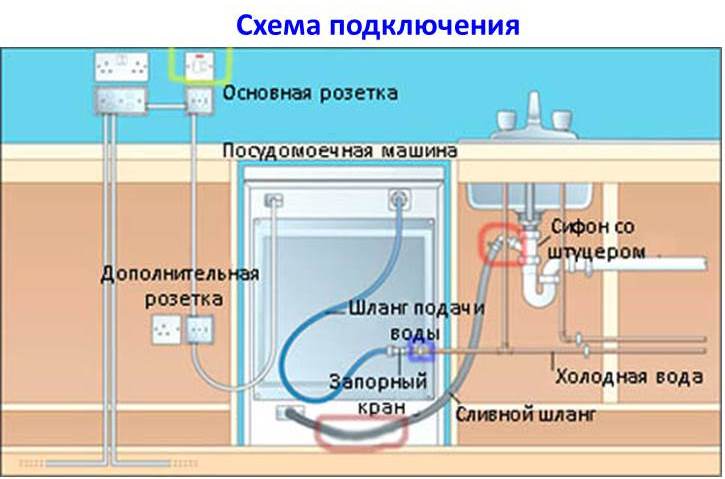
Note! If possible, do not lengthen the drain hose, this will lead to excessive load on the pump and its quick failure.
Some instead of connecting the drain hose to the siphon, throw the hose through the sink. It's one thing if you have a compact dishwasher standing on the table. And then, we would not recommend this method. But if the dishwasher is outdoor, then you will have to pump the water high, the pump will quickly fail. In addition, this method is not safe, the hose may come off the sink and the flood in the kitchen can not be avoided.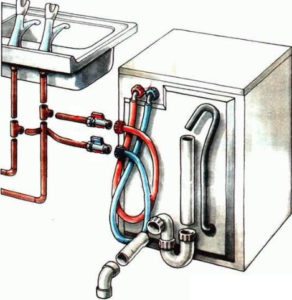
The best option is to connect the water to the dishwasher through a mixer. To do this, you need:
- block the water going to the mixer;
- disconnect the cold water hose from the mixer, removing the old insulation;
- connect a tee with a tap to a pipe with cold water;
- connect the mixer hose to one outlet of the tee, and the coarse filter to the other; the inlet hose of the dishwasher is connected directly to the filter, and all connections are insulated with a cigarette holder.
Screw the inlet hose by hand tightly enough; no keys are required in this case.
Important! It is recommended to connect to cold water, it is cleaner than hot water, however there are dishwashers with connection to both hot and cold water.
Electrical connection
The dishwasher must only be connected to the mains via a separate, grounded outlet. Tees and extension cords are not allowed; besides, you cannot connect a refrigerator and stove to the same outlet simultaneously with the dishwasher. Therefore, you need to take care of the socket for the car at the stage of installing electrical communications. Otherwise, it is better to call a specialist who will remove the wires from the electrical panel and make a ground outlet.
Trial testing
The final step in connecting a dishwasher should be testing it. To do this, you can start a test wash without dishes using salt and powder. This makes it possible to check how correctly the installation of communications was carried out. Particular attention should be paid to how water is collected, whether there are any water leaks at the joints. If everything went well, install the dishwasher in the designated place or slide it into a niche.
The process of connecting the machine can be considered completed. We hope that you understand how to connect a dishwasher with your own hands. In addition to the article, we suggest watching a video on connecting a dishwasher.
Interesting:
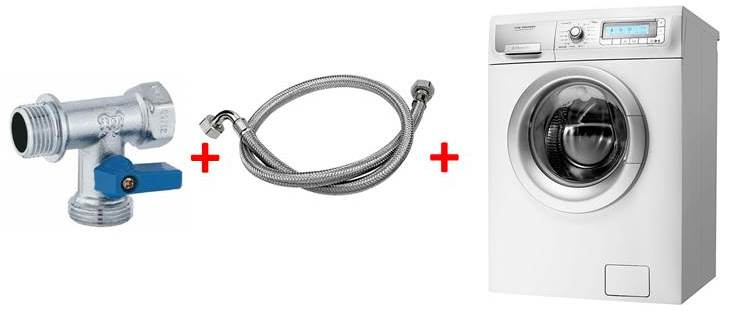 We select and install a tee crane for a washing machine
We select and install a tee crane for a washing machine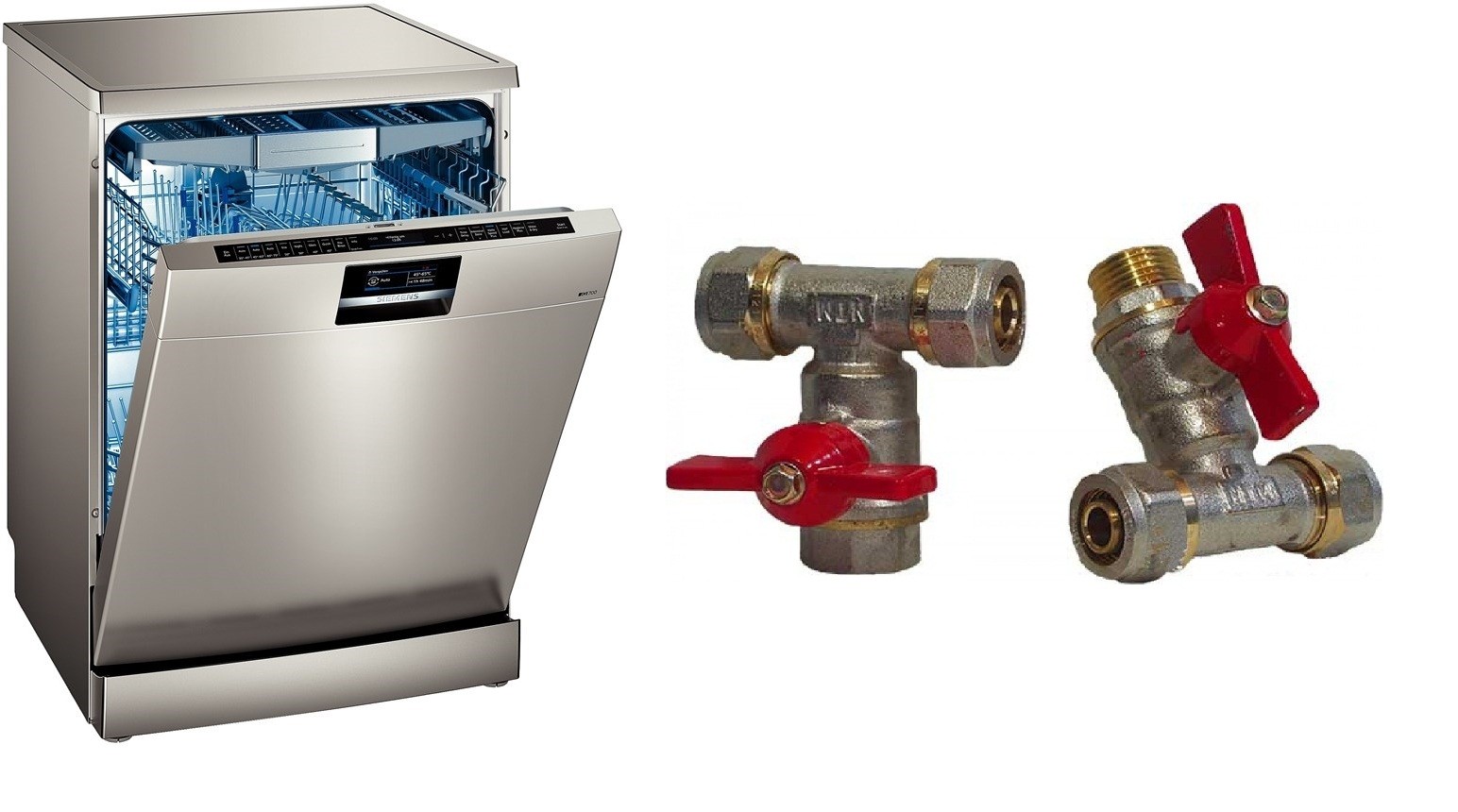 Faucet for connecting the dishwasher to the water supply
Faucet for connecting the dishwasher to the water supply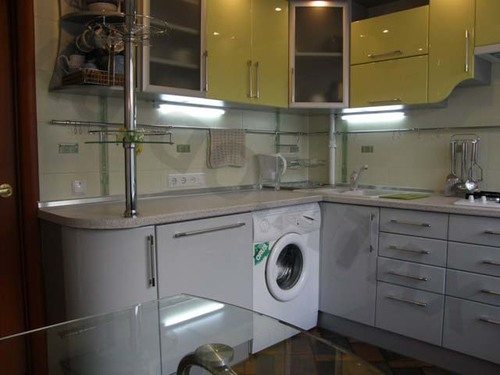 Washing machine in the kitchen under the countertop
Washing machine in the kitchen under the countertop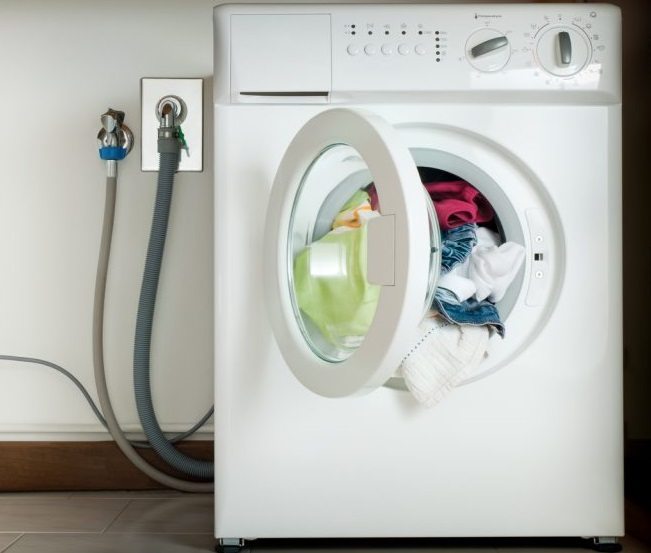 How to connect the drain hose of the washing machine to ...
How to connect the drain hose of the washing machine to ...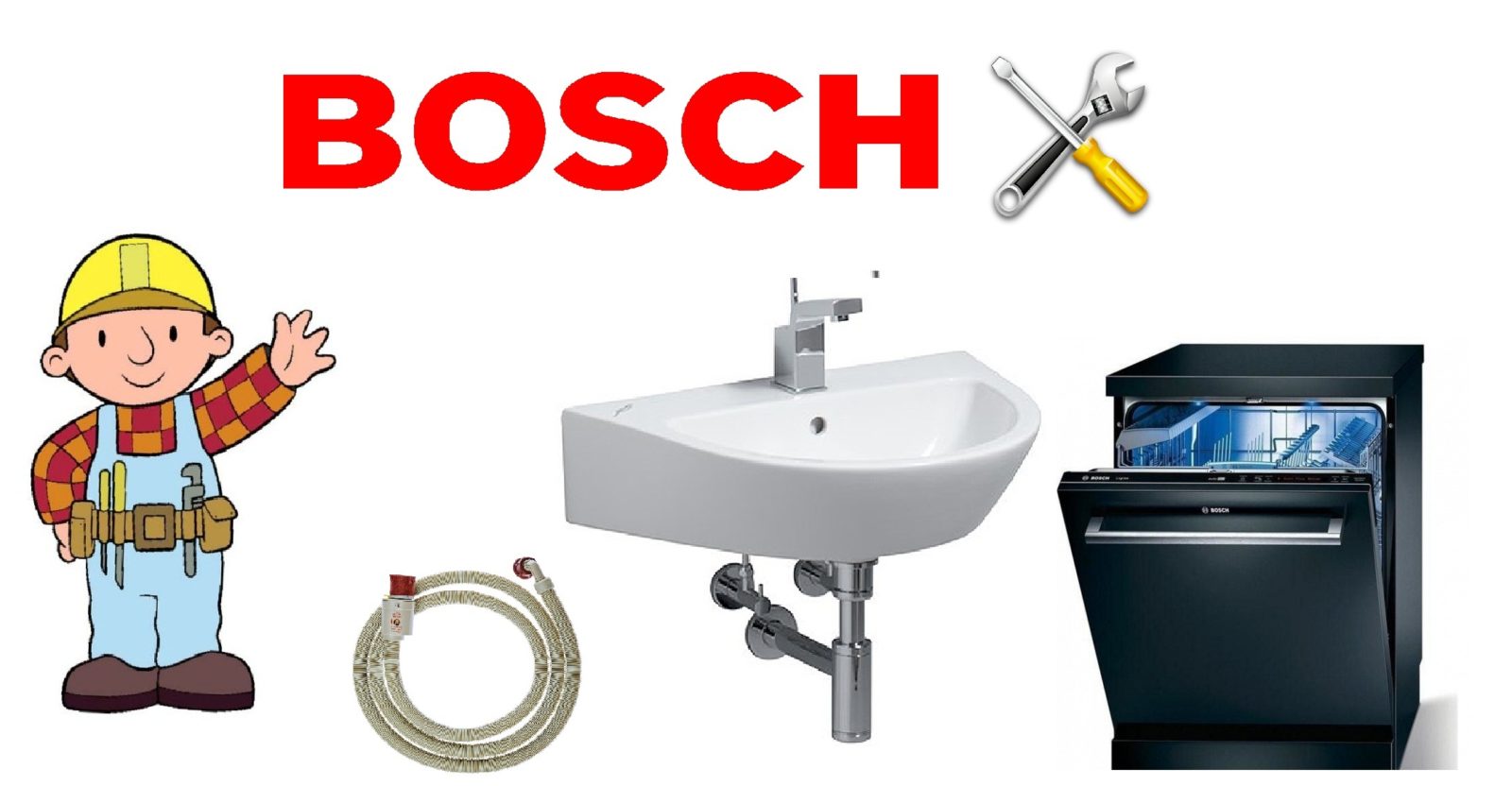 How to connect a bosch dishwasher yourself
How to connect a bosch dishwasher yourself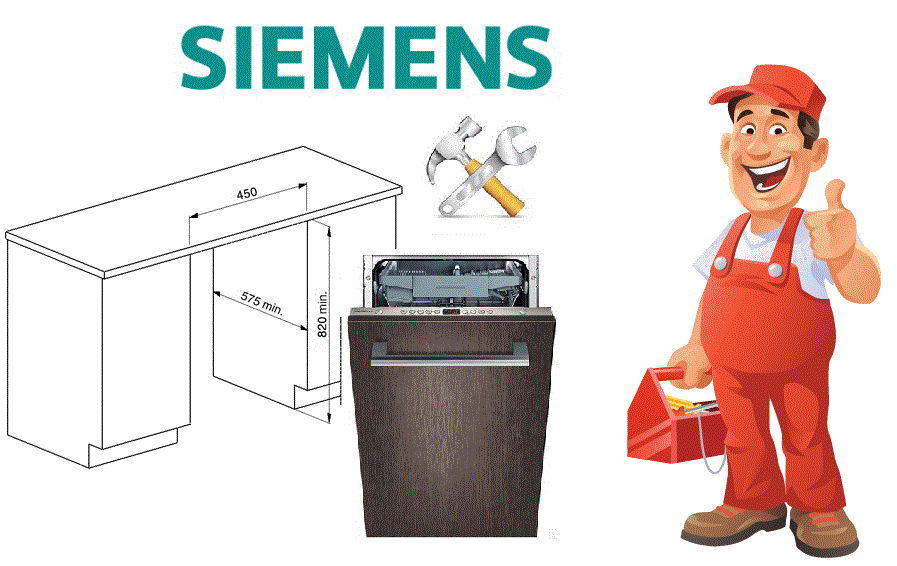 DIY installation of a Siemens dishwasher
DIY installation of a Siemens dishwasher
2 reader comments
Add a comment Cancel reply
Headings
Washing machine repair


For buyers
For users

Dishwasher












If not overflow valve included?
The author is clearly not competent, “connection through a mixer” !? A is described before the mixer.
The height of the glorious hose is not indicated, only "bad in the sink."
Conclusion of specially sockets from the shield is rubbish, in modern apartments all sockets allow you to connect. The power of a dishwasher is less than that of a kettle or iron.
But the obligation of a grounding contact is not indicated in the socket, and this is important - both for electrical safety and for protecting the control unit - if your control unit fails, then this is 90% due to lack of ground or poor contact in the grounding.